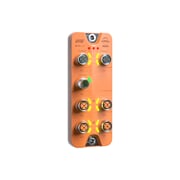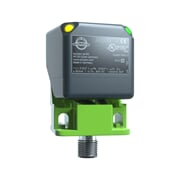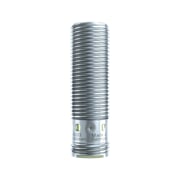IP protection classes in sensor technology
IP protection ratings: Explanation of protection rating identifiers
Electrical equipment is often used in industrial applications in difficult environmental conditions. The IP protection ratings describe which devices are suitable for the different environmental conditions. But what does the IP classification stand for? How is the IP code structured? Discover here which protection rating is the right one for your application.
What is the IP certification?
The IP protection rating describes to what extent an electrical device is protected against the unintentional ingress of dirt, foreign bodies and liquids. The protection against penetrating liquids refers only to water and cannot be applied to aggressive media and oils. IP certification is an international standard whose protection ratings are clearly defined according to IEC 60529 (DIN EN 60529).
IP code: How is it structured?
The IP code is composed of the prefix ‘IP’ and two identification numbers. The term IP stands for ‘international protection’. The first digit indicates the degree of protection against the ingress of foreign bodies. The second digit indicates the degree of protection in humid and wet environments. A complete overview of the possible identification numbers can be found in the IP protection ratings chart. The scope of protection for the IP protection ratings is given for solids as 1 to 6 and for liquids as 1 to 9K. The higher the identification number, the greater the degree of protection. Devices featuring IP65 or higher are simultaneously IP60 to IP64 protected. This statement is no longer generally valid for a protection rating of IPX5 and higher. Usually, several protection ratings are specified in this case to ensure the housing can withstand all corresponding situations. An IP68 certified device is suitable for permanent submersion, for example. However, it does not mean that IP68 also protects against strong water jets (IP66). If a device meets both criteria, it is marked with both IP68 and IP66.

P stands for 'International Protection'. The first digit indicates the degree of protection against the ingress of foreign bodies, and the second digit indicates the degree of protection in moist and wet environments.
Patrick Targonski, Product Manager at autosen


Difference: Protection rating and protection classes
Protection rating or protection class - which term is correct in connection with the designation ‘IP’? Caution: There is a likelihood of confusion between the terms ‘IP protection class’ and ‘IP protection rating’. In this context, ‘protection class’ is technically incorrect - the term ‘IP protection class’ does not exist, even though it is often used in colloquial speech. However, the term ‘protection class’ (without IP) does exist: in electrical engineering, a distinction is made between protection classes I, II and III. The protection classes indicate which protective measures the device offers against direct and indirect contact. Protection classes protect people against contact with electrical power. Discover more about protection classes here. The (IP) protection rating, on the other hand, indicates the environmental conditions against which the device is protected.
Comparison of NEMA code / IP protection rating
The NEMA code is a US standard that suggests the total level of protection a housing can offer electronic equipment. It has many parallels with the IP protection rating, especially with regard to the scope of protection against the ingress of water and solids. Nevertheless, the NEMA code cannot be fully compared with the IP protection rating, as other factors such as ice formation and explosion protection are also considered.







 Cloud compatible
Cloud compatible



